Art

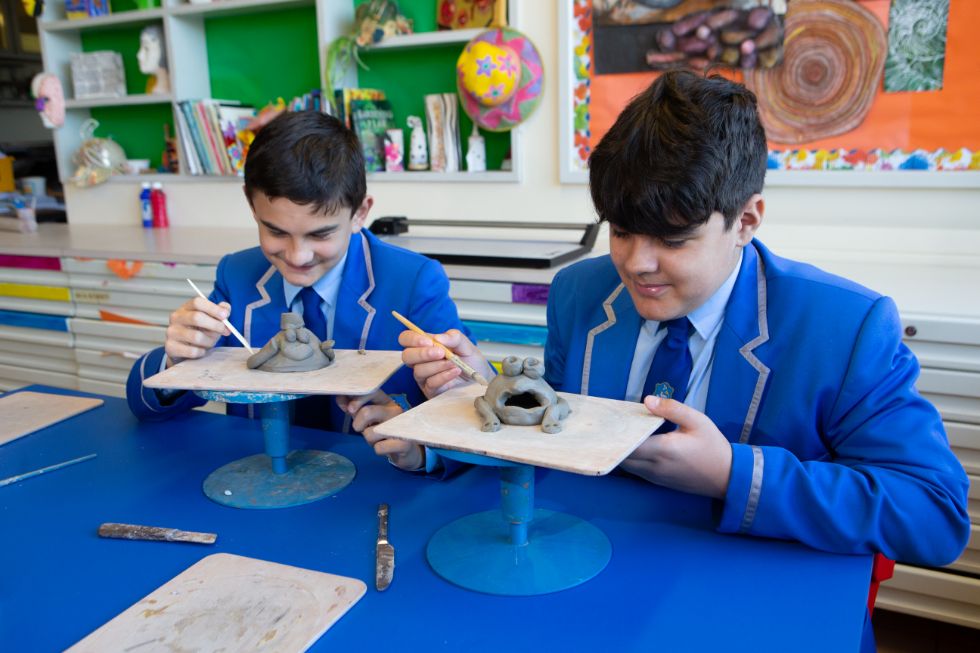
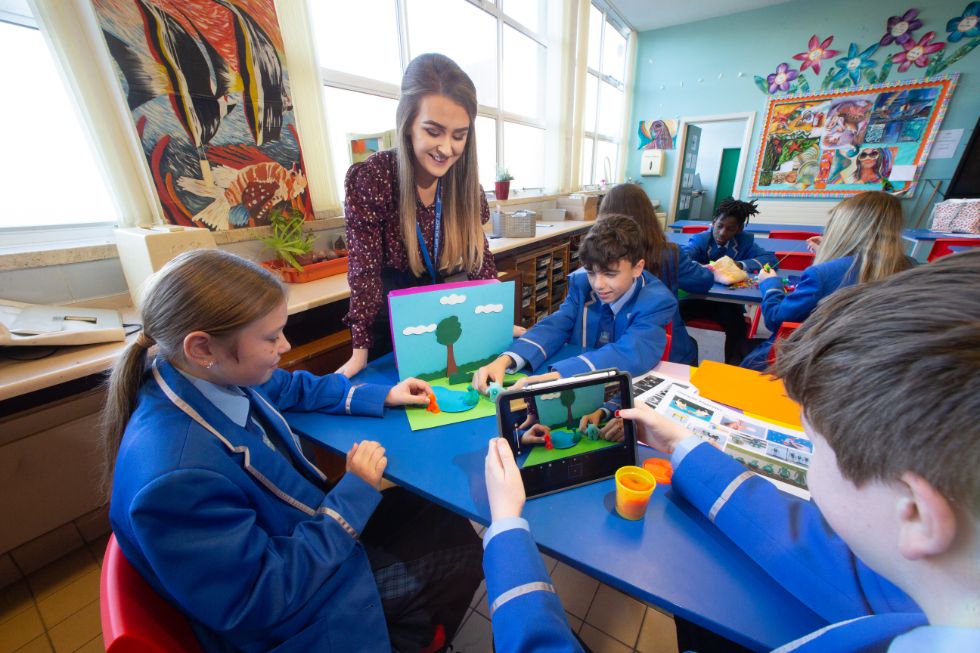
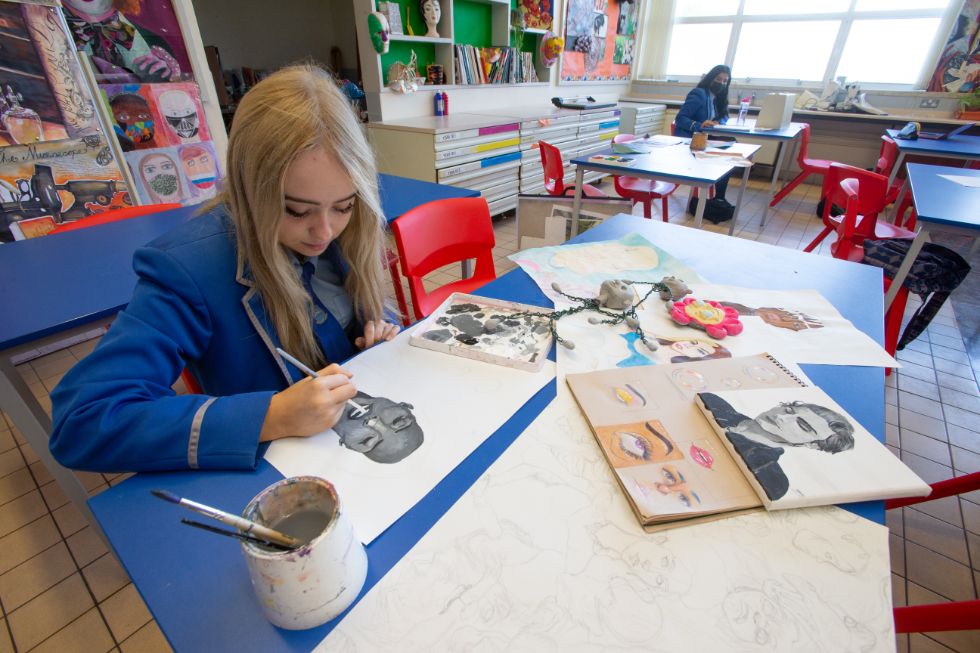
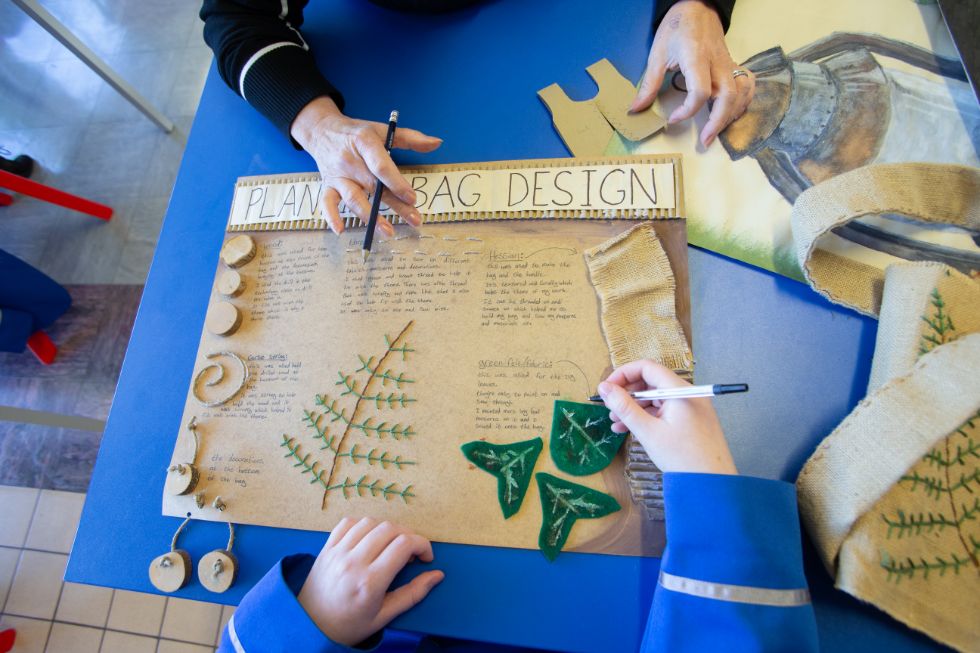
Art and Design is an essential element in the education of all children and a central one in the area of Creative and Expressive Studies in the National Curriculum.
The development of the whole person as a creative unique individual able to communicate is at the heart of the subject. Art and Design encourages and fosters the stimulation of the imagination and the opportunity to express creatively ideas, feelings and emotions.
In SJBC, the programme is planned to ensure that every pupil has the opportunity to develop their artistic potential in the wide field of Art and Design.
This year we achieved 100% pass rate for GCSE Art and Design, something we are extremely proud of and hope to carry on throughout the years to come.
Teachers
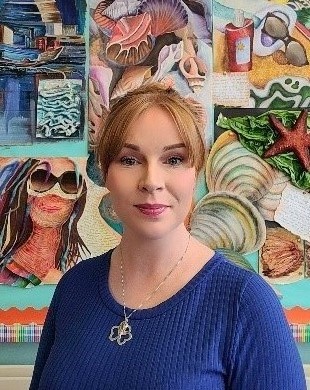
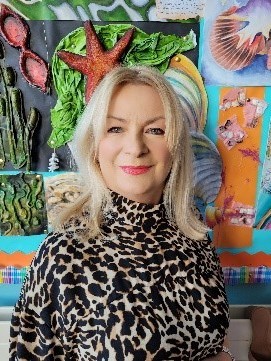
Mrs Rafferty teaches Art and Design here in SJBC in KS3 and KS4, is form teacher for 12A, and is really enjoying her fifth year here in the school. Having previously graduated with a BEd in Art and Design, she has since gained a wealth of experience over 15 years teaching across all Key Stages in both the Primary and Secondary sector. When not acting as a taxi service for her three children, she enjoys music, travelling and spending time with family and friends.
Mrs Coyne is an Art & Design teacher with many years of teaching experience. Art pupils in SJBC have enjoyed their after schools fun art classes, trips to the Ulster Museum and window painting in the neighbouring Rosemount Nursing Home Portadown.
KS3 Overview
Key Stage 3
The Key stage 3 programme of study includes not only painting and drawing but work in a wide variety of mixed media.
The pupils are encouraged to have fun, to explore, to problem solve, to work with others and investigate the work of other artists and designers
In the Art Department, pupils will develop skills in
Graphic Media – Drawing and Painting
Ceramics -2D and 3D clay modelling
Printmaking
Textiles – working with fabrics and threads
IT – Graphic design
Semi Rigid and Soft Materials – Sculptural forms
|
Key Stage 3 |
|||
|
Year 8 |
Term 1 |
Term 2 |
Term 3 |
|
Theme |
Visual Awareness Colour Theory |
African Art |
Environment |
|
Media |
Drawing/Painting |
Print Making |
Ceramics |
|
Year 9 |
|||
|
|
Term 1 |
Term 2 |
Term 3 |
|
Theme |
Graphic Design |
Fantasy |
Food |
|
Media |
Drawing, Painting, ICT/Photoshop |
Textiles/Print Making |
Ceramics |
|
Year 10 |
|||
|
|
Term 1 |
Term 2 |
Term 3 |
|
Theme |
Pop Art |
Natural Form |
Horror |
|
Media |
Painting/Drawing |
Ceramics |
Textiles/Collage |
KS4 Overview
Art and Design
CCEA’s Art & Design qualifications challenge students to develop their observational skills and aesthetic appreciation. Investigation, experimentation and self-expression are prized at all levels, and this ethos helps students as they learn how to express their inner-most feelings and perceptions visually.
From Entry Level to A2, CCEA’s Art and Design qualifications stimulate student imaginations and help them to explore new ways of seeing and representing the world around them.
You will study.
Two units are studied over two years.
|
Unit 1 |
Controlled Assessment Part A: Exploratory Portfolio (25% of GCSE) Part B: Investigating the Creative and Cultural Industries (35% of GCSE) |
|
Unit 2 |
Externally Set Assignment (40% of GCSE) |
Moving Image Arts
Students work on a range of creative, critical and technical tasks at this level, including
planning and creating their own moving image products. The GCSE builds on students’
basic introduction to the moving image at Key Stage 3 and helps them to progress to
further study and practice at GCE level.
In a culture that is significantly shaped and influenced by audiovisual discourse, this
specification promotes students’ development as individuals and skilled contributors to
the creative and cultural industries. It enables students to use creative and critical skills in
viewing, writing, directing, producing and editing film. It also promotes the development
of creative enterprise, technical, organisational and people management skills. Students
will develop contextual knowledge and critical skills when researching and applying a
variety of historical and contemporary moving image techniques. The course allows
students to make connections between their own work and that produced in the wider
creative industries. It will also provide students with the opportunity to progress to
higher levels of study, vocational training and employment.
We are offering this specification as a linear course.
- Component 1: Critical Understanding of Creative and Technical Moving Image Production;
- Component 2: Acquisition of Skills in Moving Image Production; and
- Component 3: Planning and Making a Moving Image Product.
Students must complete all three components to fulfil the requirements of this
qualification.











